It will probably not surprise you much to learn that I don’t like taking medicine. While I’m thankful for the availability of strong medicine when it’s needed, I prefer to go with natural methods. Nature provides so much of the medicine we need, and I like to use what’s right under my nose (and feet, or overhead.)
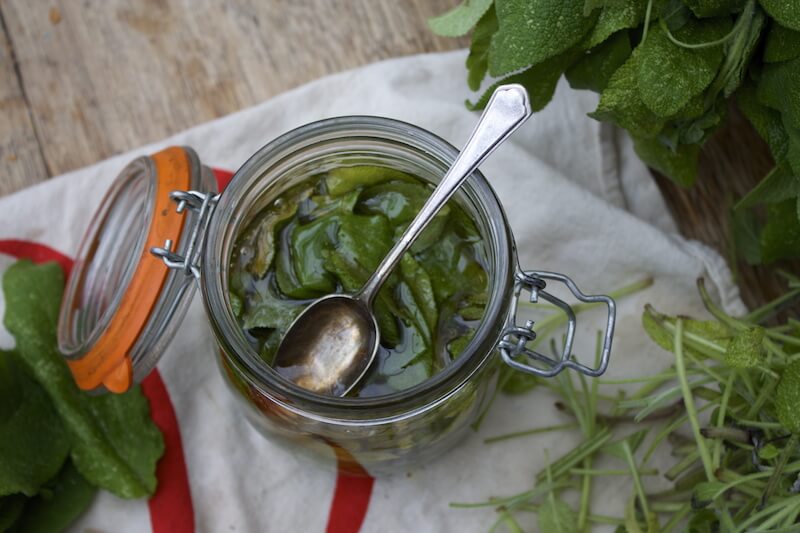 We have a bumper crop of sage this year, so I am making a few things, including Sage and Honey Cough Syrup. It’s so simple, but effective. In fact, this study showed just honey to be more effective than drugstore cough syrup. Sage is an anti-bacterial, astringent and anti-inflammatory herb, which makes it great for sore throats and coughs. Sage and honey together make a wonderful cough syrup, and it’s so simple that I think everyone should make a batch.
We have a bumper crop of sage this year, so I am making a few things, including Sage and Honey Cough Syrup. It’s so simple, but effective. In fact, this study showed just honey to be more effective than drugstore cough syrup. Sage is an anti-bacterial, astringent and anti-inflammatory herb, which makes it great for sore throats and coughs. Sage and honey together make a wonderful cough syrup, and it’s so simple that I think everyone should make a batch.
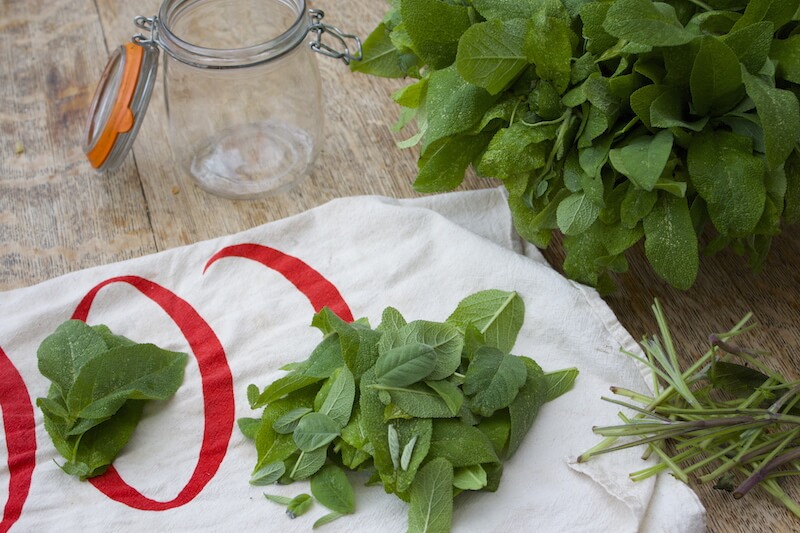
Sage and Honey Cough Syrup
This is such a simple and effective cough syrup. A batch will keep forever because honey is an excellent preservative.
Ingredients
- 1 cup or more of fresh, organic sage leaves
- 1 cup or more of raw honey, preferably local (if you don’t have a local source, you can order it here)
- a clean jar or glass container that can be sealed tightly and can hold at least 12 oz. (I love these and these, and mason jars are also perfect.)
Instructions
- Wash and dry your sage very thoroughly.
- Trim the leaves from their stems.
- Pack the sage leaves into your glass jar, and pour the honey over. It will take a while for the honey to ooze between the leaves and underneath them.
- Stir it up with a clean spoon, and seal the jar. Stir it up daily and let sit for about a week.
- (Optional) Remove the leaves, pressing all of the honey out of them. You can decant into a bottle that is easier to pour like this kind, or just leave it there and spoon it out as needed. I am going to keep the leaves in the jar, and pull one leaf out at a time for cups of tea.
- Administer medicinally in teaspoonfuls for sore throats and coughs, or stir a spoonful into a mug of warm water with a squeeze of lemon as a soothing tea.
- Store tightly sealed in the fridge. It should last for a long, long time as honey is an excellent preservative.
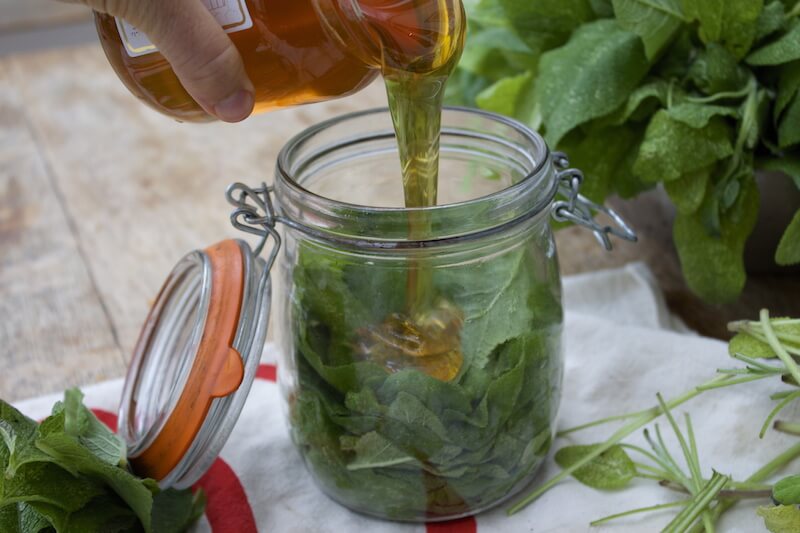 I used a ton of sage, because we have so much. I would guess at least two packed cups. I also used about two cups of honey. This is of course a very flexible recipe: more sage + less honey = stronger sage syrup, and vice-versa.
I used a ton of sage, because we have so much. I would guess at least two packed cups. I also used about two cups of honey. This is of course a very flexible recipe: more sage + less honey = stronger sage syrup, and vice-versa.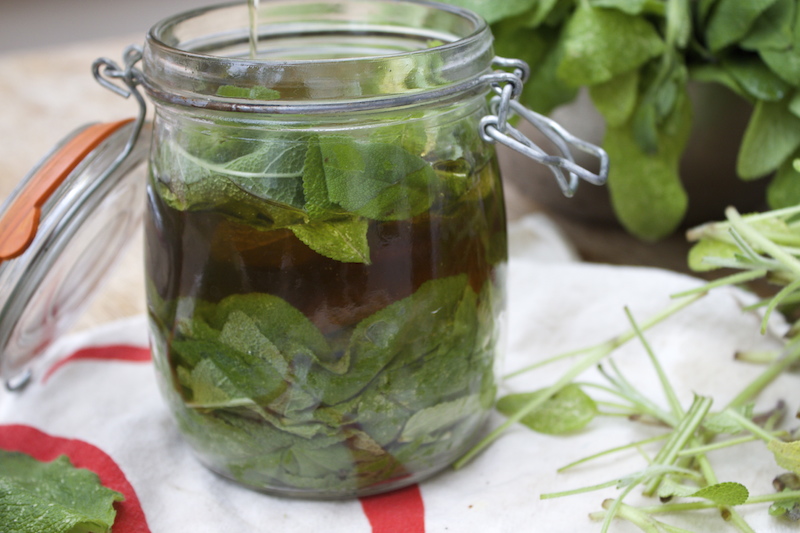 Here is my honey about three days into steeping. You will notice that the leaves look more dried out. Also, the honey has thinned a bit with the addition of the moisture from the sage leaves.
Here is my honey about three days into steeping. You will notice that the leaves look more dried out. Also, the honey has thinned a bit with the addition of the moisture from the sage leaves.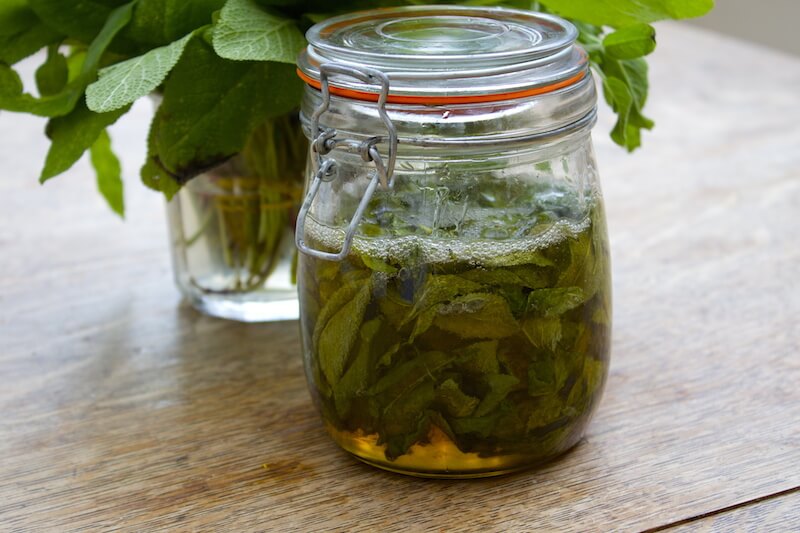 I recently spooned some of this sage honey over raspberries and cultured cream as a dessert– very good. You could also use it in cocktails (like this one.) I’m sure there are many more uses! The next time I whip up a batch, I’ll try adding thinly sliced organic lemons. I hope you’ll be making some of your own medicine this year– this simple Honey and Sage Cough Syrup is a great place to start! You might also like to make this Elderberry Winter Tonic.
I recently spooned some of this sage honey over raspberries and cultured cream as a dessert– very good. You could also use it in cocktails (like this one.) I’m sure there are many more uses! The next time I whip up a batch, I’ll try adding thinly sliced organic lemons. I hope you’ll be making some of your own medicine this year– this simple Honey and Sage Cough Syrup is a great place to start! You might also like to make this Elderberry Winter Tonic.
Have you made some herbal medicines for your family before? What are your favorite natural remedies?

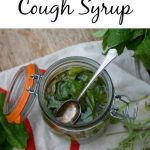


Thank you!!! I need to find local honey and I will be whipping up my own batch soon.
I have a ton of sage as well and I just LOVE this idea! I live with a chronic cough so hopefully this will help. Thanks!!!!
We will be making this for sure, I am always on a lookout for homemade cough remedies. Why did you remove the stocks?
Masha, I think the leaves will fit better without the stems, and that part is more stiff, so the leaves can’t be packed in quite as well– but it’s not an important part of the process, and you can skip it.
Can you use white sage for this? Thanks 🙂
I’m sure you could, Diane!
I’m going to try this recipe.
★★★★★
Would this recipe be okay for a 3 year old? I know my 1-year old can’t have honey yet, but wanted to make sure sage is okay for a toddler.
I have read some warnings on using sage tea in small children. I think just honey would be good.
Add some mint leaves…it will add to the effectiveness by opening up the bronchial cells.
Great idea, John!
I am doing many home remedies for me and my family, with excellent results!
https://topnaturalremedies.net/home-remedies/oldest-efficient-cough-syrup-world-recipe/
Plz what’s the other name for sage leave? Not really getting the leave stuff
The other name is Salvia Officinalis. I hope this helps!
Awesome! My husband has frequent coughs, so I found you there! I’m making this for him now. Anyway, thanks for sharing here.
Can Not wait to share this with my bee keeping aunt & uncle they are going to love passing it along as well
I have cateracts am alittle afraid to use sagehoney
Can you please elaborate on this? Im interested in knowing about the connection between cataracts and sage honey.
I was wondering if this needs to go in the fridge the day it’s made or if it stays on the counter for the firs week and then should be put in the fridge?
I have the same question!
I have kept mine at room temperature, since honey is an excellent preservative. As long as the leaves are dry when you put them in, you should have no issues.
Oh fantastic my grandchildren always have m I have thinking of any natural remedy and here you are with sage n honey thanks a lot for this health information I have lots of sage in my garden
I totally agree with you. I really hate drugs. Nature is the best. But I don’t know the expiry date of “Sage and Honey Cough Syrup”?
Could I use very high quality sage essential oil?
Quick question this for kids they intake in a spoon? Or with food?
Yes, if you want to leave it out of the fridge, you MUST use dried herb, otherwise the added moisture to the honey can make it spoil. If using fresh, you can still keep it a long time, just keep it in the fridge.
Excellent post and wonderful blog, this sort of interesting posts I really like, keep it up…
★★★★★
Do I use dried or fresh leaves?
Thanks for this recipe! I just made my first batch and will start using it right away, as I just happen to have a bad cough and don’t like taking medicines. Much appreciated!
★★★★★
The local honey I get here isn’t brown and liquid, it is yellow and thick… should I heat it before pouring it in? I’m worried otherwise it’ll just sit on top of the leaves and not go down.
Yes, you can definitely heat it to make it liquid again before pouring it in.
★★★★★
I need to keep this recipe on hand for winter.
Hello, Can I use leaves that are just naturally dry and fresh off the plant (to keep at room temperature when done), or do I need to actually dry the leaves out with a dehydrator or other method if I am going to keep this at room temperature? I assume just off the plant is fine. I use fresh garlic in honey jars and keep at room temperature. Thanks
I love this! Can I use dried sage and get similar results?
★★★★★